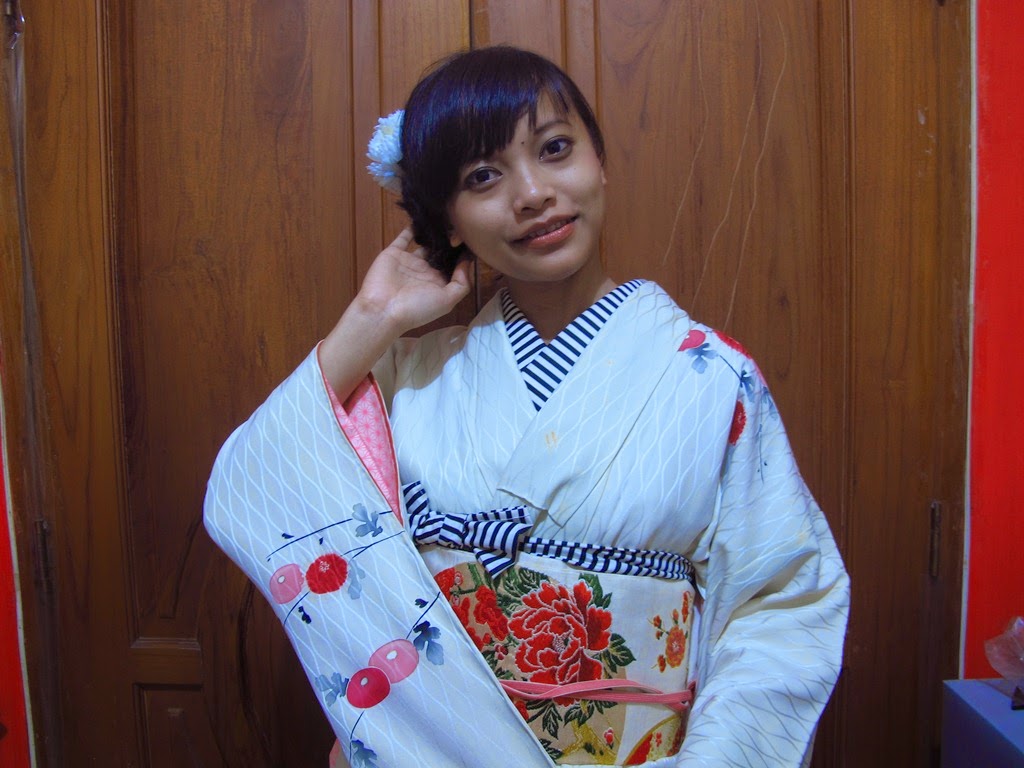White kitsuke. And Peonies were everywhere. Kimono. Obi. Kanzashi. All endowed by peonies :D. The pictures were taken after nightfall (I think it was almost midnight) and most of my kitsuke has already disheveled :P. We had nice dinner at Frank Wurst, a German cuisine restaurant near Gramedia bookstore. I ordered broccoli and cheese, schnitzel (I hope I wrote it correctly), I forgot what I ordered for the drink. Hubby ordered mashed potato, something-wurst (gee, I didn't remember the name) and drink (again, I forgot what he ordered, sowwie).
 |
| My back shot wasn't great. |
The sode of the kimono was longer than the juban . At first I was afraid that the juban will be peeking out it would cause some embarassing moment. But after I put the kimono and obi, I didn't worry much. Hubby helped me doing the taiko. The haneri, obiage and kanzashi were all self-made. The kanzashi actually was a synthetic flower I bought from a florist. I just think I might make a kanzashi from synthetic one :D.


















